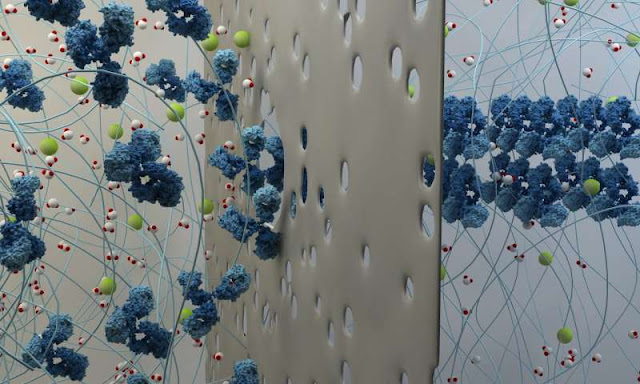New molecular printing technology could recreate complex chemical environments that resemble the human body
 New patterning technology which could open opportunities to recreate complex biological environments has been developed by researchers.
3DEAL' is a simple and inexpensive fabrication technique able to generate complex molecular patterns within soft matter, such as hydrogels, with microscale resolution and up to centimetres in depth.
This capacity enables the possibility to engineer 3-D hydrogel environments with spatial control of the chemical composition, opening the opportunity to recreate biological scenarios such as 3-D molecular gradients or patterns. This could be used to design new drug screening platforms or build complex tissue engineered constructs.
"The human body is largely made up of anisotropic, hierarchical, and mostly three dimensional structures. New ways to fabricate environments that can recreate physical and chemical features of such structures would have important implications in the way more efficient drugs are developed or more functional tissue and organ constructs can be engineered."
New patterning technology which could open opportunities to recreate complex biological environments has been developed by researchers.
3DEAL' is a simple and inexpensive fabrication technique able to generate complex molecular patterns within soft matter, such as hydrogels, with microscale resolution and up to centimetres in depth.
This capacity enables the possibility to engineer 3-D hydrogel environments with spatial control of the chemical composition, opening the opportunity to recreate biological scenarios such as 3-D molecular gradients or patterns. This could be used to design new drug screening platforms or build complex tissue engineered constructs.
"The human body is largely made up of anisotropic, hierarchical, and mostly three dimensional structures. New ways to fabricate environments that can recreate physical and chemical features of such structures would have important implications in the way more efficient drugs are developed or more functional tissue and organ constructs can be engineered."
 The key design feature of 3DEAL is the use of an electrical field and a porous mask, which can be used to move and specifically localize multiple types of molecules within hydrogels with microscale resolution and within large volumes.
"A major advantage of the technique is its robustness and cost-effectiveness. It is simple and can be used with different types of readily available hydrogels and be patterned with different types of molecules."
The researchers hope to create variations of the technique to enable even more complex patterning as well as focus on specific applications in tissue engineering and relevant in vitro models for biological studies.
The key design feature of 3DEAL is the use of an electrical field and a porous mask, which can be used to move and specifically localize multiple types of molecules within hydrogels with microscale resolution and within large volumes.
"A major advantage of the technique is its robustness and cost-effectiveness. It is simple and can be used with different types of readily available hydrogels and be patterned with different types of molecules."
The researchers hope to create variations of the technique to enable even more complex patterning as well as focus on specific applications in tissue engineering and relevant in vitro models for biological studies.


Comments
Post a Comment